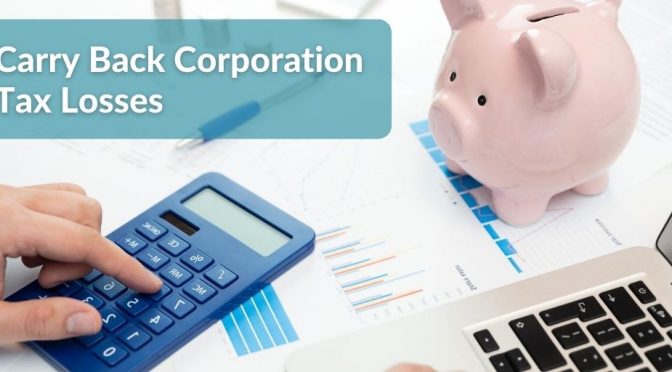
Relief for corporation tax losses your company has made in a year can provide it with a refund of corporation tax.
The outbreak of Covid-19 has presented companies with a unique set of challenges. Chief among them is how to manage cash flow.
Where your company has been adversely affected by the pandemic, it could well be faced with a tax loss making position.
Where this is the case, it can offset the current year’s tax loss against the profits of the previous year. It can reclaim the associated corporation tax that was paid. Moreover, the liability may not have been paid for the current year. In which case, it should be possible to reduce the amount payable to HMRC.[1]
So, this is how claiming tax losses works:
- In the year to 31st March 2019, your company has taxable profits of £24,000. It has paid tax of £4,800 in December 2019. However, in the year to 31st March 2020 your company made a tax loss of £22,000.
So what do you do to claim the tax losses?
- The tax return for the year to 31st March 2019 is amended to show taxable profits of £2,000 and once it is filed, there will be a refund of tax of £4,400.
HMRC are currently keen to make these refunds swiftly, since they wish to be seen to be helping all businesses during these strange times.
Likewise, if your company has made a capital gain in the previous year, the tax loss for the current year can be offset against this gain too. It is not restricted to trading profits.
On this point though, the company must have carried out the same trade in both years. So, your company continues to supply electrical components in both years, then it is acceptable that you can offset these losses. However, in the second year if you decide to supply garden furniture too, any losses incurred in this new trade cannot be carried back. It is only those relating to electrical components.
There are some other caveats to claiming tax losses and some of these are as follows:
- It may be in your interests to shorten your accounting period. If so, and the period is for nine months then only nine months of the previous year’s profits can be used to relieve the tax losses of the following. So, for both longer or shorter periods there must be an apportionment, a loss is only carried back 12 months.
- Any claim must be made within two years of the end of the accounting period the loss was made in.
What if I have not paid my tax for the previous year and I have a tax loss in the current year?
Where the corporation tax return for the current tax loss making period has not yet been submitted, there is no formal method allowing companies to make an early claim to carry back loss relief.
If your company wishes to make an early claim, they will need to approach HMRC and obtain clearance for that to be allowed. The tax return for the earlier profit is amended. The submission to HMRC requesting the early carry back of losses will need sufficient evidence that losses will be included in the company tax return for the loss-making period when it is eventually submitted. Providing an acceptable form of evidence is therefore critical to the timely success of a repayment.
Summary
Claiming tax losses is a relatively simple way to help your company’s cash flow. Next week we will look at Research and Development Reliefs, which may also form part a range of tactics you can use to make it through these challenging times.
Contact Us
For help and advice, get in touch with our tax team: 01904 655202 or email enquiries@hghyork.co.uk
[1] The legislative reference for carry back loss relief is: CTA 2010 s37(s)(b)(6)(8) and s38 [old reference ICTA 1988 s393A(1)(b)(2)-(2C)].







